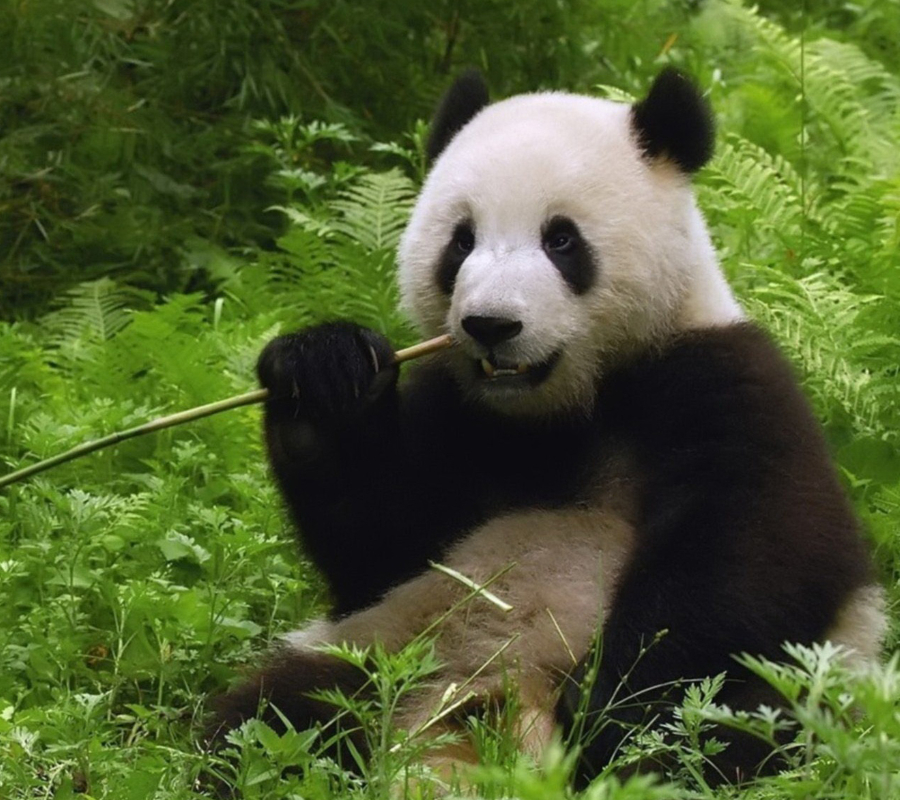China’s global icon, the giant panda, has been just taken off the red list of the International Union for Conservation of Nature (IUCN), which means it is no longer an endangered species. The Chinese have restored panda’s habitats by making bamboo available to them.
Unfortunately, the eastern gorilla has been tagged as critically endangered by IUCN mostly due to illegal hunting. Craig Hilton-Taylor, director of the IUCN Red List, told the BBC that the key to protecting the cute and cuddly pandas is to get the bamboo back because 99 percent of their daily diet consists of 12kg (26lbs) to 38kg worth of the plant.

If the amount of bamboo they require to maintain their energy needs is not available, they will most likely starve. In the 1980s, a loss of habitats caused the number of pandas to decrease to just over 1,200.
The lovely creatures are now considered vulnerable instead of endangered on the IUCN’s Red List because there are currently 2,060 pandas, of which 1,864 are adults, according to a report by the BBC.
Ginette Hemley, a senior official for wildlife conservation at the World Wildlife Fund (WWF), praised China’s efforts of investing in panda habitats, expanding and building new reserves.
Hemley added that the current panda situation was a great example of the results that come when a government cares about conservation.
But the consequences of climate change could easily outweigh any efforts made so far to protect the beautiful bears.
Mr. Hilton-Taylor explained to the BBC that the ground is going to get too hot for the bamboo to grow, which will lead to the destruction of more than one-third of the panda’s habitat in the next eight decades.
Why are pandas are an icon of conservational efforts?
The pandas are so widely acclaimed that most people forget about the Tibetan antelope, another species that has also been delisted on the list of endangered animals.
Hemley explained that the cuddly bears have become an icon for animal protection efforts mainly due to the distinctive features that make them very charismatic.

Similarly, Dr. Cheng Wen-Haur, Chief Life Sciences Officer and Deputy CEO of the Wildlife Reserves Singapore, noted that the results of the panda’s natural adaptation process happened to match what humans perceive as lovely.
Of course, this species is much easier to love than many other creatures fighting to survive. But what about the eastern gorilla? They may not be as cute as pandas, but they are our closest evolutionary relatives. And they are being wiped out from this planet by humans.
Illegal hunting has led the eastern gorilla to the list of almost-gone species
Over the past two decades, illegal hunting has been the main cause of a 70 percent decline in the eastern gorilla’s population. Scientifically known as Gorilla beringei, the eastern gorilla is composed of two subspecies: mountain gorillas and Grauer’s gorilla, which live in rainforests located in Uganda, Rwanda, and the Democratic Republic of Congo (DRC).

There are only 800 mountain gorillas and about 3,800 Grauer’s gorillas. In the 1980s, there were 20,000 of them. The eastern gorilla has joined three of the other great ape species already on the list of critically endangered species: the western gorilla, the Sumatran orangutan, and the Bornean orangutan.
“If we can protect our large primary forests and make local and indigenous people the beneficiaries of that, we’ll continue to share the world with great apes. If we don’t, we’re done. We’ll have a few relics left but, ecologically speaking, the great apes will be gone,” said Dr. M Sanjanyan, vice-president at Conservation International, as reported by The Guardian.
In the early 1990s, the Rwandan civil war led to an alarming decrease in Grauer’s gorilla numbers, as Wildlife Conservation Society’s primatologist John Robinson told The Guardian. The gorillas became a source of meat to the refugees who set up mining operations after they moved into the Kahuzi-Biéga national park, the ape’s heartland in the eastern DRC.
Mountain gorillas have also been affected by the illegal poaching as a consequence of civil unrest. Another important explanation for the drop in the numbers of the species is the cultivation of palm oil in Indonesia and Malaysia. Primatologist Jane Goodall noted that palm oil is moving into Africa as there are more people willing to take advantage of the resource, which is used in many cosmetic products.
“We are fighting on many fronts to save the apes,” said Robinson, The Guardian reported. “We are by far the most successful of the great apes and have pushed our cousins right up against the wall.”
Other endangered species on the IUCN’s Red List
The Australian bridled nailtail wallaby has improved from endangered to vulnerable, just like the giant panda in China.
On the other hand, the koala, which was previously not considered in danger whatsoever, is now considered vulnerable mainly because of loss of habitat, forest fires, and drought, according to The Guardian.

The IUCN assessed a total of 82,954 plant and animal species, including 23,928 listed as threatened in some way. There are 5,107 species considered critically endangered, and about 50 percent of them are plants. Large numbers of amphibians, mollusks and fish are also about to be completely wiped out from Earth.
Source: BBC
